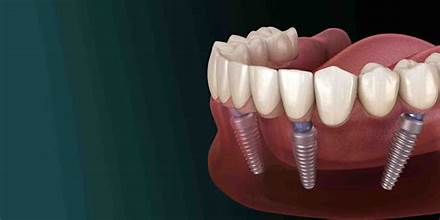HEALTH
Understanding the Different Types of Veneers: Which Is Best for You?

Are you considering upgrading your smile with veneers? Understanding the different types of veneers can help you make an informed decision.
Veneers come in various resources, including porcelain and composite resin. Each type serves unique benefits and aesthetic outcomes.
This blog will explore the pros and cons of each, helping you determine which option suits your needs. With the right type of veneers, you can achieve a natural-looking, radiant smile.
Dive in to learn more about your veneer options! Keep on reading!
What Are Dental Veneers?
Dental veneers are thin, custom-made shells that are put over the front of teeth to make them look better. Most of the time, they are made of porcelain or composite resin, which are colors that match real teeth.
Veneers can fix many dental problems, such as discoloration, chips, gaps, and teeth that aren’t lined up right. For the application, a small amount of enamel must be removed from the tooth surface to make sure the fit is right.
This solution for cosmetic dentistry is strong and will last a long time. Getting veneers is a good way to get a perfect smile.
Types of Veneers
There are several main types of veneers to choose from, each with its own advantages and unique characteristics. Understanding the differences can help you make an informed decision. Below, we explore the most common types of veneers:
Porcelain Veneers
Porcelain veneers are popular because they are strong and look very realistic. They don’t stain easily, so they’re a great option for keeping your smile bright for a long time.
Made carefully in a dental lab, veneers can be matched to the color and shape of your natural teeth. Although getting them means a bit of enamel is removed, the result is a beautiful smile that looks great.
Plus, porcelain veneers are less likely to irritate your gums, making them a favorite choice for many people who want a natural-looking smile.
Composite Veneers
A tooth-colored resin is used to make composite veneers. The dentist shapes the resin and fixes it to the teeth. They don’t cost as much as porcelain veneers and can usually be done in just one visit.
Composite veneers are easier for many people to get and are a quick way to fix minor cosmetic problems. They may need to be touched up more often because they don’t last as long as porcelain.
Lumineers
Lumineers are a brand of very thin porcelain veneers that don’t need much preparation. Because they are so thin, Lumineers can often be put on without a lot of drilling or enamel removal.
In comparison to traditional veneers, this makes them a less invasive choice. People like Lumineers because they are easy to put on and can be reversed, but they might not be right for everyone, especially if you need major orthodontic work done.
No-Prep Veneers
As the name suggests, no-prep veneers don’t need much or any work done to the existing tooth structure. Because they are made to go right on top of teeth, these veneers don’t need to be reshaped too much.
This kind of veneer is great for people who want to keep their natural tooth enamel. However, the lack of preparation may make it less suitable for people with more complicated dental problems, as it might be hard to get the perfect fit.
Removable Veneers
People who want to improve their smile temporarily can use removable veneers, which are also sometimes called “snap-on veneers.” You can take these veneers off whenever you need to, which makes them a good choice for special events.
Removable veneers are made to fit over your natural teeth, but they aren’t meant to be worn all the time. It takes longer for them to wear off than permanent veneers, and they might not look as good.
Zirconia Veneers
Zirconia veneers are another option that is strong and looks good. Because they are made of zirconium dioxide, these veneers last a very long time and don’t chip or stain easily.
It looks like real teeth and zirconia veneers are more durable than some other types. Even though they need a little more work than no-prep veneers, many patients find that the extra work is worth it because the veneers are strong and last a long time.
This dentist who does dental implants in Cleveland TN adds that zirconia veneers are biocompatible, which means they are less likely to cause irritation to the surrounding gum tissue. This makes them a great option for patients looking for both durability and comfort in their dental veneers.
Emax Veneers
Lithium disilicate glass-ceramic, which is used to make Emax veneers, is known for being very strong and clear. These veneers are perfect for people who want their teeth to look natural and lifelike while also being strong.
Emax veneers are a good choice because they don’t chip or crack as often as other types. Even though they cost more, many patients think that the extra money is worth it because they last longer and look better.
Temporary Veneers
While waiting for permanent veneers to be made, temporary veneers are often used as a short-term fix. To get used to the look and feel of permanent veneers, these veneers make your teeth look better for a short time.
A patient can keep their smile during the transition period because they are an important part of the veneer process. These are an important part of the veneer journey, even though they aren’t as long-lasting or as good-looking as permanent options.
Which Veneer Is Best for You?
Choosing the right veneer depends on your dental needs, budget, and cosmetic goals. Here are a few factors to consider:
Aesthetic Preference
Which veneer you choose will depend a lot on how you like the way it looks. Because they look like real teeth, porcelain veneers are a popular choice for many.
Lumineers might be the best choice for you if you want something that can be taken off and is less invasive. They give your teeth a smooth, natural look. With their clear, lifelike finish, Emax veneers are a great choice for people who want something strong and attractive.
Durability
If you want veneers, durability is very important. It is known that porcelain veneers last a long time. With proper care, they can last over ten years.
Despite being less expensive, composite veneers may need to be fixed and replaced more often. When it comes to strength, Emax and Zirconia veneers stand out. They are reliable, won’t chip, and always look good.
Tooth Condition
The condition of the teeth has a big effect on how well veneers fit. Porcelain or Emax veneers work best on teeth that are healthy and have little damage. The results last a long time.
Composite or no-prep veneers may be a good choice for people with small flaws because they require less work to be done on the natural tooth structure. For strength and good looks, severely damaged or misaligned teeth may need longer-lasting veneer options like zirconia veneers.
Cost
Veneers cost a lot of different amounts depending on the material used and how hard the procedure is. Because they last longer and look more natural, porcelain and Emax veneers tend to be the most expensive.
While composite veneers are less expensive, they may need to be maintained more often. If you want a less invasive option, no-prep veneers and Lumineers are comparable in price but not by much.
The Application Process
There are usually a few steps involved in putting on veneers to make sure they fit perfectly and look great. At first, your dentist will do an evaluation, which includes talking about your goals and looking at your teeth.
Next, a little enamel is scraped off the front of the tooth to make room for the veneers. Then, molds are made of your teeth that will be used to make the custom veneers.
People often get temporary veneers put on while their permanent ones are being made in a dental lab. When they are ready, the custom veneers are carefully glued to your teeth with a strong glue.
The dentist will make any changes that are needed to make you feel better and look better. Follow-up appointments make sure that the veneers are still looking good and working properly.
Longevity and Care
With the right care, your veneers will last a lot longer. If you take care of your teeth by brushing and flossing every day, porcelain and Emax veneers can last more than ten years.
Do not use toothpaste that is too rough or abrasive because it can scratch the veneer. You need to go to the dentist for regular check-ups to keep an eye on the condition of your veneers.
Do not bite down on hard foods or objects, as this can damage or chip veneers. The same care rules apply to composite types of veneers, even though they may need to be fixed more often.
If you grind your teeth at night, a night guard can help protect your veneers. Veneers stay looking good and working well as long as they are taken care of regularly and gently.
Discovering the Ideal Types of Veneers for Your Smile
Different types of veneers can be used to fix different dental problems. There is a type for everyone, whether you want something that lasts, is affordable, or doesn’t require a lot of surgery.
It’s important to think about the pros and cons of each. You can make the right choice if you talk to your dentist about it. Remember that the right type of veneer improves both how things look and how they work. Make a smart choice for a beautiful smile that lasts.
Did you like this guide? Great! Please browse our website for more!
HEALTH
Dental Implantology Will Always Involve Some Post-Surgery Pain

Are you considering getting dental implants? You’re not alone! Dental implantology is all the rage in dentistry right now, offering a reliable solution for those looking to replace missing teeth. But before you dive into this transformative treatment, there are some truths about post-surgery pain that you should know. Let’s uncover the honest facts about what to expect after undergoing dental implant surgery and how to manage any discomfort effectively.
Dental Implants Are Big in Dentistry Right Now
Dental implants have revolutionized the field of dentistry, offering a permanent and natural-looking solution for missing teeth. This innovative treatment has gained immense popularity in recent years due to its high success rates and long-term benefits.
Unlike traditional bridges or dentures, dental implants provide a stable foundation that mimics the structure of natural teeth. This not only enhances aesthetics but also improves functionality, allowing patients to eat, speak, and smile with confidence. But they do come with some risks – ongoing pain being one of them.
With advancements in technology and techniques, dental implant procedures have become more efficient and comfortable for patients. Accuracy is also vital – don’t end up with a messy operator – the more precise the implanting the better and the less chance of an unfavourable outcome. Yes, dentists can now customize treatment plans to suit individual mouth shapes, ensuring optimal outcomes for each case.
If you’re considering dental implants as a tooth replacement option, consult with your dentist to explore how this cutting-edge solution can transform your smile and overall oral health. An don’t be afraid to come across as a perfectionist – it may be the vibe that gets the very best performance out of your surgery.
All On 4 Are a Comprehensive Replacement Treatment
All On 4 dental implants have revolutionized the world of tooth replacement. This treatment involves securing a full set of new teeth on just four implants per arch. Unlike traditional dentures, All On 4 provides a permanent solution that looks and feels like natural teeth.
With All On 4, patients can enjoy restored confidence in their smile and enhanced chewing ability. The innovative design allows for a comprehensive restoration without the need for individual implants for each missing tooth. According to this dentist who does All On Fours in Lincoln Park, the surgery is usually completed in one day, reducing recovery time.
This advanced technique not only saves time but also reduces costs compared to traditional implant procedures. By strategically placing the implants at specific angles, All On 4 offers stability and support for the entire prosthesis.
All On 4 is an excellent option for those seeking a long-term tooth replacement solution that mimics the function and aesthetics of natural teeth seamlessly.
Yet it’s no secret that dental implant surgery including All On 4 can lead to post-operative pain. Many patients wonder, though, if dentists are always upfront about the discomfort they may experience after the procedure. The truth is, reputable dentists will typically discuss potential post-surgery pain with their patients before moving forward with any treatment.
Are Dentists Ever Honest About Post-Surgery Pain?
Being transparent about what to expect in terms of pain management is crucial for building trust and ensuring patient satisfaction. While some may downplay the discomfort involved in dental implantology, most dentists prioritize honesty and open communication when it comes to discussing post-operative pain.
By setting realistic expectations and providing detailed information on how to manage pain effectively following surgery, dentists can help alleviate concerns and ensure a smoother recovery process for their patients. Remember, it’s always important to have an open dialogue with your dentist about any worries or uncertainties you may have regarding post-surgery pain.
Dental Implantology Is Major Mouth Trauma
Implantology is not for the faint-hearted. It involves major mouth trauma as the dentist must surgically place metal posts into your jawbone to support artificial teeth. This process can cause discomfort and swelling, leading to post-surgery pain that varies from person to person.
The procedure itself may sound intimidating, but it’s essential for those looking to restore their smile and improve oral health. The good news is that advancements in technology have made dental implants more efficient and less invasive than ever before.
While the thought of undergoing such a procedure may be daunting, many patients find that the long-term benefits outweigh any temporary discomfort. Proper pain management techniques can help minimize post-surgery pain, allowing you to recover comfortably and enjoy your new smile sooner rather than later.
Severe Pain May Herald a Dental Emergency
While some post-surgery pain is expected after getting dental implants, severe and persistent pain should never be ignored. If you experience intense discomfort that doesn’t improve with prescribed medication or if you notice any signs of infection such as swelling, fever, or excessive bleeding, If you believe your severe pain may need an urgent solution then it’s crucial to seek immediate help from your dentist, or even go straight to hospital..
Being proactive about addressing severe pain can prevent potential complications and ensure the long-term success of your dental implant procedure. Remember, a trustworthy dentist will always prioritize your well-being and provide honest guidance throughout – and also after – your treatment journey.
Stay informed, stay vigilant, and remember that managing post-surgery pain is an essential part of the dental implant process. Trust in the expertise of your dental care provider to guide you through any challenges you may face along the way, but also trust your own panic button (instincts).
HEALTH
Sleep Soundly: The Ultimate Guide to the Best Oral Appliance for Sleep Apnea

Imagine waking up feeling refreshed, energized, and ready to tackle the day ahead. Sleep apnea no longer has to dictate the quality of your sleep or your life.
With the right dental appliances, you can say goodbye to sleepless nights and hello to peaceful slumber. But with so many options on the market, how do you know which one is right for you?
Don’t worry, we’re here to help! In this guide, we’ll take a deep dive into the best oral appliance for sleep apnea to help you make an informed decision.
Ready for a sound sleep that rejuvenates your body and mind? Let’s dive in!
Mandibular Advancement Devices
MADs are the most commonly recommended oral appliance for sleep apnea. They work by gently shifting your lower jaw forward, which helps to keep your airway open while you sleep.
This prevents the collapse of soft tissue at the back of your throat that causes snoring and obstructive sleep apnea. MADs are easy to use, customizable, and often more effective than other types of oral appliances.
Tongue Retaining Devices
For those who prefer not to have anything in their mouth while sleeping, TRDs are a great alternative. They work by holding the tongue in place to prevent it from falling back and blocking the airway.
They are also more compact and portable than MADs, making them a great option for travel. However, they can be a bit uncomfortable at first and not be as effective for more severe cases of sleep apnea.
Continuous Positive Airway Pressure Masks
CPAP masks are often the first line of treatment for sleep apnea. They work by delivering a continuous stream of air through a mask, keeping your airway open while you sleep.
While effective, CPAP masks can be bulky and uncomfortable, making it difficult for some people to adjust to wearing them every night. Additionally, they may not be a viable option for those who frequently travel.
Adjustable Airway Pressure Devices
Similar to CPAP masks, adjustable airway pressure devices deliver a constant stream of air, but with the added ability to adjust the air pressure. This can be beneficial for those who have trouble tolerating high pressures and experience discomfort or dry mouth.
Plus, they are more compact than CPAP masks, making them easier to travel with. However, they may not be as effective as other options for those with serious cases of sleep apnea.
Custom-Fitted Dental Mouthpieces
These are the most expensive and time-consuming options, but also the most effective for acute cases. A dentist will take impressions of your teeth and create a customized mouthpiece that holds your jaw in a forward position while you sleep.
This helps to keep your airway open without the need for bulky equipment or uncomfortable straps. However, it may not be covered by insurance and requires regular check-ups for adjustments.
Those seeking personalized treatment might explore solutions like this oral appliance therapy in Pasadena, CA. They offer customized devices designed to fit your needs and improve the quality of your sleep.
Exploring the Best Oral Appliance for Sleep Apnea
Choosing the best oral appliance for sleep apnea is a significant step towards better sleep and improved health. Remember, the right device is the one that you feel comfortable using every night.
Consult with a sleep specialist or a dentist experienced in this treatment to find your ideal match. Ready to reclaim your night’s rest and transform your days? Explore your options today and wake up to a brighter, more vibrant tomorrow.
Did you find this article helpful? Check out the rest of our blog now for more!
HEALTH
The Importance of Personalized Treatment Plans in Intensive Inpatient Therapy

Have you or a loved one ever needed help that felt truly tailored just for you?
In the world of mental health, one size hardly fits all, which is why the concept of personalized treatment plans in intensive inpatient therapy is changing lives. Imagine a plan that understands your unique struggles, strengths, and goals.
This article dives into why personalized plans are not just beneficial but essential in intensive inpatient therapy, offering a beacon of hope for those seeking a path to recovery.
Tailored Approach
A tailored approach in therapy means the treatment is made just for you. It looks at what you need and what your goals are. This way, you get help that truly fits what you’re going through.
When therapy fits your needs, you might feel better faster. It’s because every part of your treatment is chosen to help you the most.
Holistic Care
Holistic care entails considering a person’s health from all angles, not just one. It includes the health of your mind, body, and emotions. This method helps make sure that all the things that might affect a person’s healing are thought about.
When someone is in intensive hospital therapy, holistic care can include a lot of different types of intense treatment. This could be going to talk therapy, working out, or learning new ways to calm down. These all help the person get better as a whole.
Increased Engagement
When therapy is personalized, patients are more likely to get involved in their treatment plans. They feel that their views and preferences are heard and valued. This leads to a stronger commitment to attending sessions and following through with the treatment plan.
Increased engagement means patients play an active role in their recovery process. They work closely with their therapists to set goals and achieve them, making progress more visible and meaningful.
Efficient Resource Allocation
Efficient resource allocation ensures that the treatment resources are used in the best way possible. This approach aims to maximize the benefits to the patient while minimizing waste. It means every aspect of the therapy, from the time spent with therapists to the use of therapy tools, is optimized for effectiveness.
This method helps both the therapy providers and the patients. Providers can offer high-quality care without unnecessary expenditures, and patients receive focused treatment that is more likely to lead to successful outcomes. If individuals require continued support after intensive inpatient therapy, read this guide to IOP (Intensive Outpatient Program) for seamless transition and ongoing care.
Flexibility and Adaptability
Personalized intense therapy depends on being able to change and adapt. With this method, the treatment plan can be changed as the patient’s needs change over time. It makes sure that the therapy stays useful and helpful while the person is recovering.
This ability to change is very important for dealing with problems or changes in a patient’s state that come out of the blue. It lets doctors change their methods to best help the patient’s growth, making sure that they keep making progress toward their recovery goals.
Intensive Inpatient Therapy Leads the Way.
In conclusion, intensive inpatient therapy stands out as a powerful tool for healing and growth. This approach provides personalized, holistic care that can meet each person right where they are in their mental health journey.
With a focus on fitting the therapy to the person, not the other way around, it opens the door to a brighter, healthier future for those who take part.
If you gained new insights from this article, be sure to explore our blog for more enlightening content.

 ENTERTAINMENT1 week ago
ENTERTAINMENT1 week agoExploring the Kristen Archives: A Treasure Trove of Erotica and More

 TECHNOLOGY4 months ago
TECHNOLOGY4 months agoBlog Arcy Art: Where Architecture Meets Art

 LIFESTYLE1 week ago
LIFESTYLE1 week agoWho Is Sandra Orlow?

 LIFESTYLE4 months ago
LIFESTYLE4 months agoThe Disciplinary Wives Club: Spanking for Love, Not Punishment

 ENTERTAINMENT5 days ago
ENTERTAINMENT5 days agoKiss KH: The Streaming Platform Redefining Digital Engagement and Cultural Currents

 GENERAL4 months ago
GENERAL4 months agoWhat are stories of male chastity? A Comprehensive Guide

 ENTERTAINMENT4 weeks ago
ENTERTAINMENT4 weeks agoMonkeyGG2: Your Personal Gaming Hub

 GENERAL9 months ago
GENERAL9 months agoWhat is goku.sx? Everything we need to know












